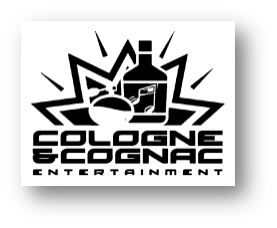The US Court of Appeals for the Federal Circuit vacated a ruling from the Trademark Trial & Appeal Board, disagreeing with the Board’s dismissal of Bureau National Interprofessionnel du Cognac’s opposition to a trademark application filed by Cologne & Cognac Entertainment related to a hip-hop record label. Bureau National Interprofessionnel Du Cognac v. Cologne & Cognac Entertainment, Case No. 23-1100 (Fed. Cir. Aug. 6, 2024) (Lourie, Clevenger, Hughes, JJ.)
The certification mark COGNAC is protected by two entities: the Bureau National Interprofessionnel du Cognac (the interprofessional union of all growers, producers and merchants of COGNAC spirits) and the Institut National des Appellations d’Origine (an administrative agency within the French government) (collectively, the opposers). Unlike a trademark that indicates a single source for a product, a certification mark is used by an entity other than the owner and is typically used to certify regional or other origin-related characteristics of the product (e.g., FLORIDA oranges, DARJEELING tea or GEORGIA peaches). The opposers are responsible for controlling and protecting the common law certification mark COGNAC for brandy manufactured in the Cognac region of France according to particular standards.
The applicant filed a trademark application in March 2019 seeking registration of a composite trademark for Cognac & Cologne Entertainment to be used for hip-hop music and production services.

The opposers opposed that trademark application, claiming priority and arguing both a likelihood of confusion with the COGNAC certification mark and that the applicant’s mark, by creating an association with the COGNAC mark, would likely cause dilution through blurring. In a split decision, the Board dismissed the opposition, finding no likelihood of consumer confusion and no likelihood of dilution. The opposers appealed.
For likelihood of confusion, the opposers argued and the Federal Circuit agreed that:
- The Board applied the wrong legal standard for “fame,” and its finding that the COGNAC mark was not famous was not supported by substantial evidence.
- The Board legally erred in analyzing similarities in the parties’ marks, and its allegedly inconsistent findings showed that its conclusion on similarity was not supported by substantial evidence.
- The Board applied the wrong legal standard in evaluating the relatedness of goods, trade channels and consumers.
The Federal Circuit reviewed the Board’s decision, working through each issue in turn. First, the Court assessed likelihood of confusion, reviewing the Board’s ultimate legal conclusion de novo and underlying factual findings for substantial evidence. The Court analyzed the DuPont factors to assess whether a likelihood of confusion existed.
Fame: DuPont factor five assesses the fame of the prior mark, including sales, advertising and length of use. Fame is not binary, but instead is a spectrum from very strong (i.e., very famous) to very weak. More famous marks have more extensive public recognition and renown and accordingly are afforded a broad scope of protection. The Federal Circuit found multiple reversible errors in the Board’s fame analyses.
The Federal Circuit explained that the first Board error was its requirement [...]
Continue Reading
read more

 Subscribe
Subscribe


